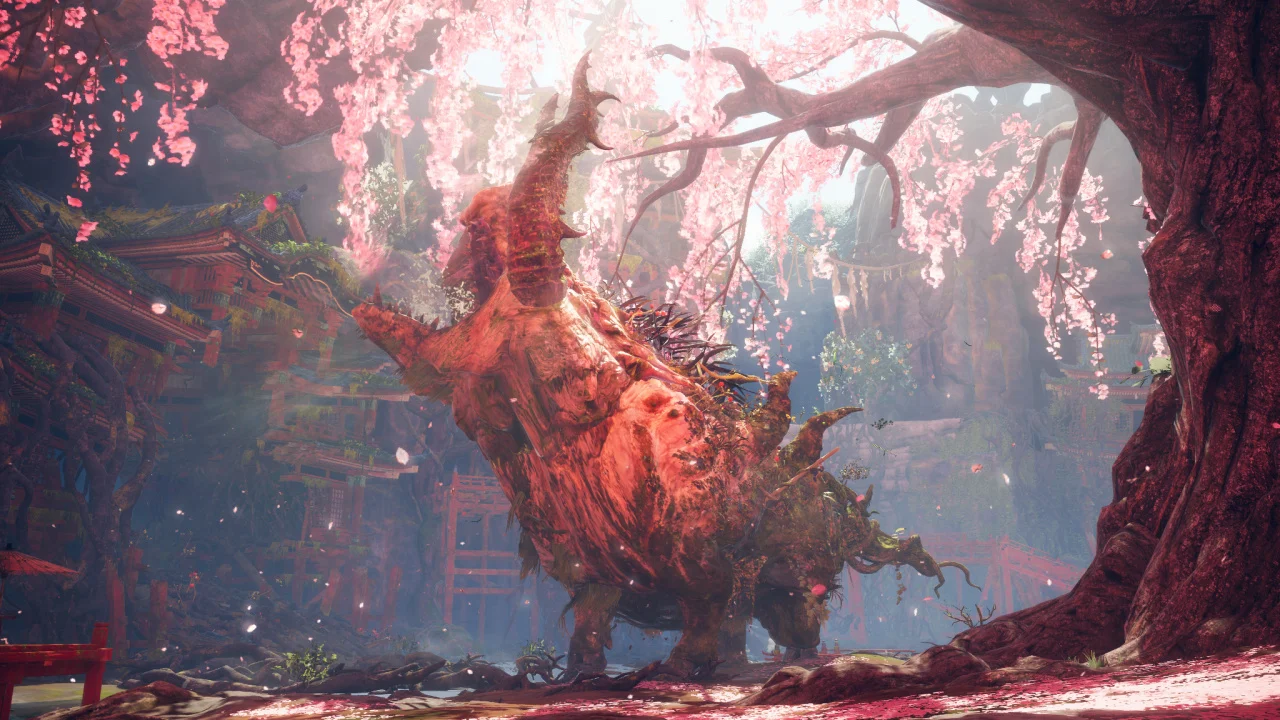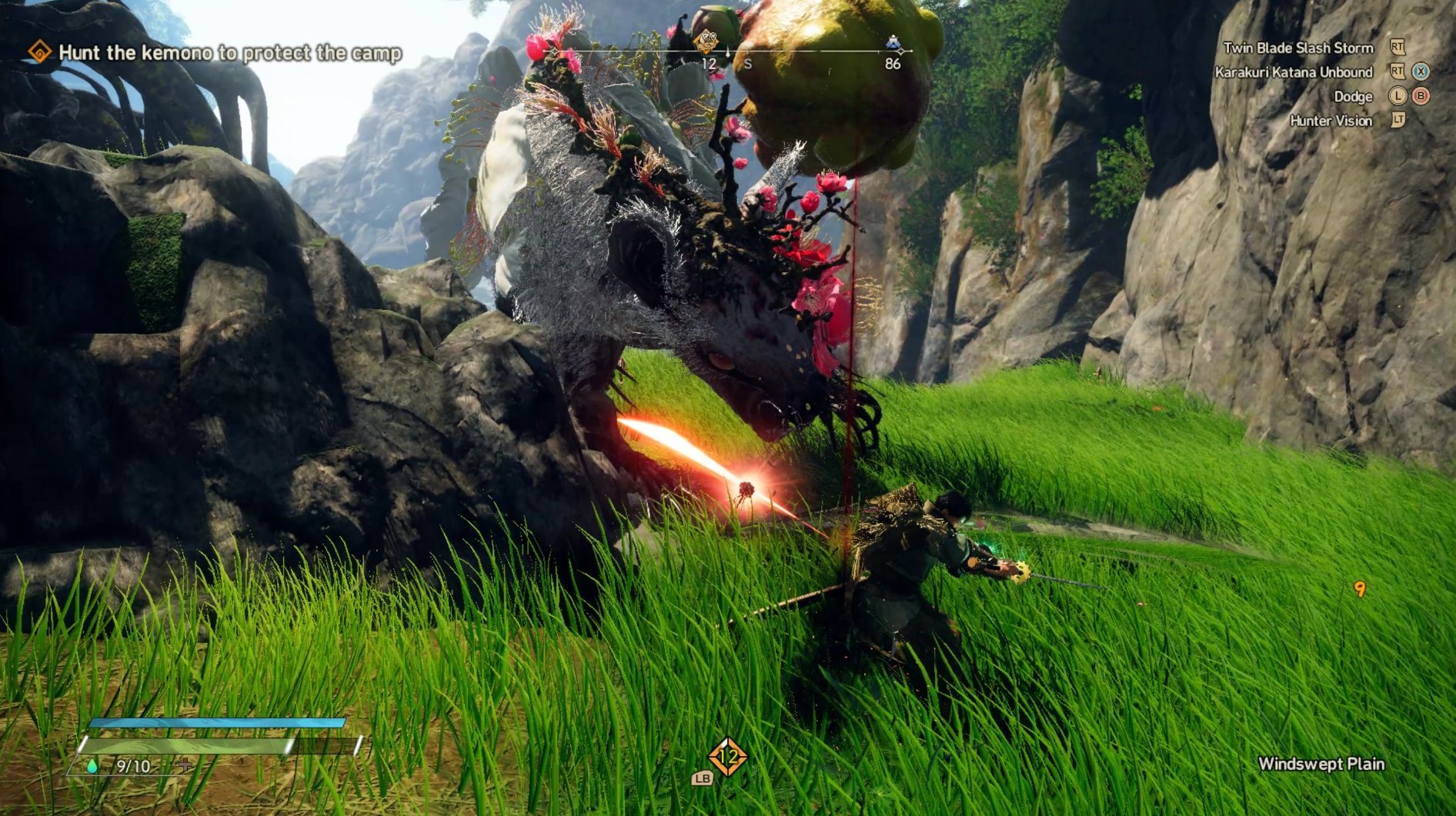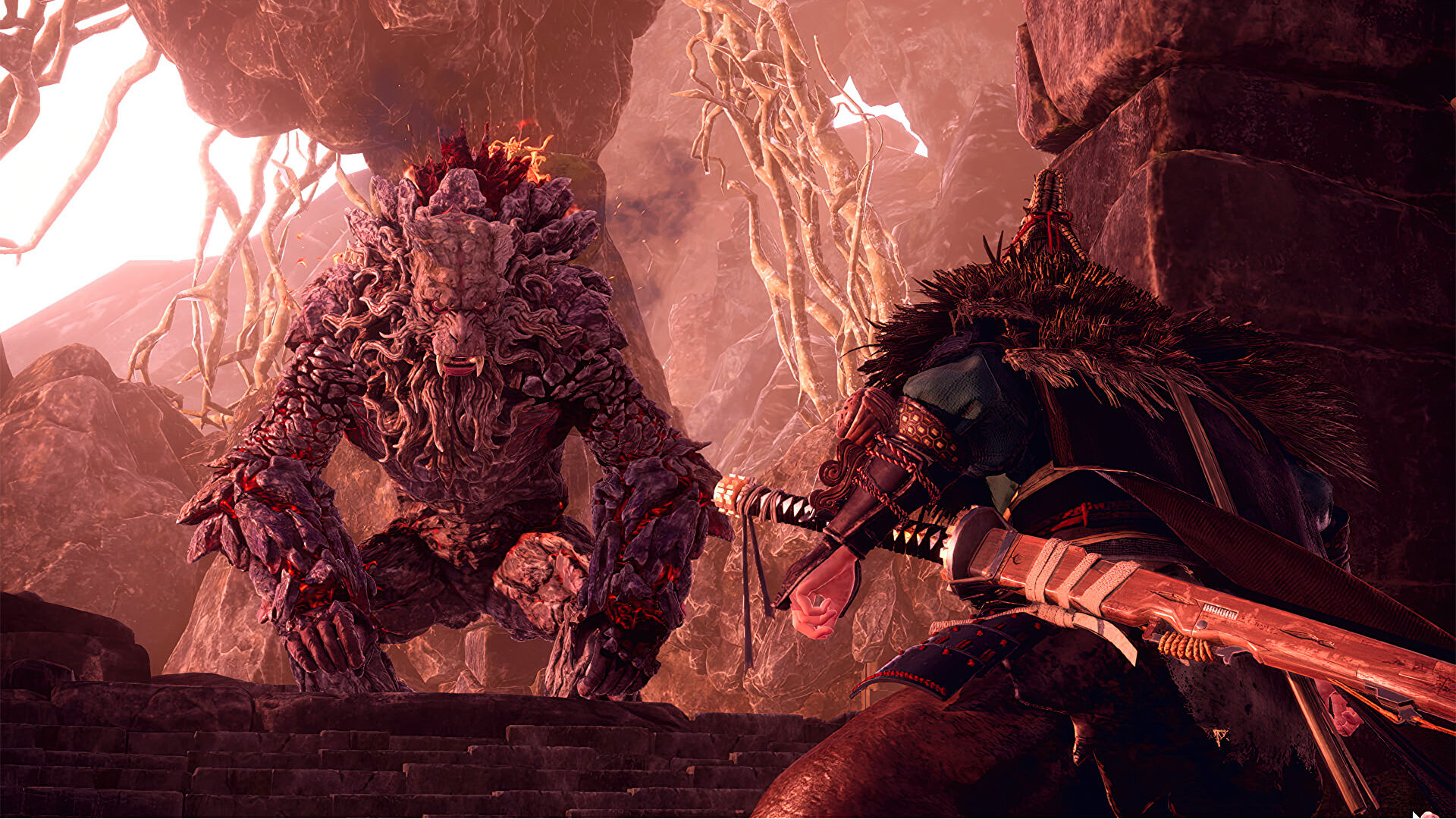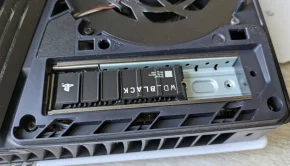Wild Hearts PS5 Review
Summary: While Wild Hearts doesn't shy away from its inspiration, it's unique spin on a tried and tested formula sets it apart from its contemporaries.
5
Monster Killer
I toyed with challenging myself not to mention the Kingtusk in the room the entire length of my Wild Hearts review, but I’d be remiss if I didn’t make the obvious comparison – yes, Wild Hearts is a Monster Hunter clone. Either alone or with fellow hunters, you spend your time chasing down monsters across a sprawling map until they’re weak enough that you can deliver that all-important final blow. Wild Hearts’ gargantuan beasts are Monster Hunter-like enough that, on the surface, it’s easy to mix the two titles up, and the over-the-top weapons you wield could easily slide right into Capcom’s long-running series. But where Monster Hunter excels at sprawling, in-depth battles, Wild Hearts offers a much more streamlined and accessible approach to the genre. In short, Wild Hearts is Monster Hunter for the masses.
It’s a clever play from EA and Omega Force. Monster Hunter is, after all, something of an institution, the near-20-year-old franchise a firm favourite with RPG fans across the globe. But while its longevity is commendable, it’s a series that’s never shied away from mind-boggling overcomplications that easily scare off casual gamers. That’s where Wild Hearts comes in. There’s absolutely depth here, but compared to Monster Hunter, Wild Hearts is a much more stripped-back affair, with user-friendly interfaces and a tight battle system that lets players get the basics before overcomplicating things.
Still, once you’ve done ticking the usual start-of-a-new-game boxes (“do I want a hideous unicorn tattoo on my face or will one on my abs suffice?”), Wild Hearts wastes no time in throwing you in at the deep end. It might not want to overwhelm you with some of its more intricate systems, but it certainly wants you ready to fight. Armed with a simple katana, one of the game’s eight surprisingly diverse weapons, you’re quickly thrust into a tete-a-tete with a Kemono, one of Wild Hearts’ ferocious beasts. It’s a battle that, while first and foremost serves to show you the basics of how the game is played, also lays the foundations of just how difficult Wild Hearts can be.
In a similar vein to Monster Hunter, fighting can’t be boiled down to simple hacking and slashing, as securing victory requires the player to utilise the many tricks your hunter has at their disposal. Learning enemy movements, their attack patterns and weak spots are all critical to gaining the upper hand, as is successfully mastering your weaponry and knowing which weapon to use at the right time. It’s not all about launching an all-out assault though, as while dealing deadly blows and well-placed attacks are key to gaining victory, becoming a master dodger is an equally important skill.
Similar to Monster Hunter, battles can often stretch on for long periods of time, with beasts retreating when weakened, leading you, the hunter, to give chase. Another familiar monster-hunting aspect comes in the form of enemy weak spots. When a creature takes enough damage, it’s occasionally possible to climb up to the spot to deal huge amounts of damage, all while claiming rare resources that can be used throughout your adventure. It’s all tried and tested stuff, but Wild Hearts fundamentals make for a solid base, allowing the game’s most unique aspect to shine; Karakuri.
When battles are proving too difficult, when your health is draining and you can’t find a quick pick-me-up across the battlefield, Karakuri can help save the day. Karakuri is Wild Hearts’ answer to Fortnite’s crafting system, allowing hunters to build boxes, jump pads, swinging vines, and everything in-between to give the player the upper hand. It takes a little while to get used to, especially in the heat of battle, but once mastered, Karakuri quickly establishes itself as potentially the best aspect of Wild Hearts. Basic Karakuri can be used to block incoming attacks or provide a quick way out of a dangerous situation, but, as your time in Azuma progresses, more elaborate Karakuri can help change the tide of battle. Some Karakuri can be chained together to create elaborate fortress walls to help put a stop to charging enemies, while others can create deadly weapons that deal huge damage to an enraged Kemono. While the ability to instantly drop these useful game-changers gives players a powerful tactical edge, using Karakuri isn’t without its drawbacks. The amount of Karakuri you can place is limited by a resource that, in the heat of battle, can be difficult to come by, so picking the right Karakuri at the right time becomes a challenge in itself.
It’s a system that only continues to impress as the game continues. There’s a sprawling skill tree that constantly unlocks new Karakuri to try out, and after twenty hours with Wild Hearts, I’d barely scratched the surface of what I could unlock. I perhaps had the most fun with the Karakuri that don’t have much use in battle, but instead serve to make my adventure across Azuma just that little bit more enjoyable. There are plenty of cosmetic-only items, like signposts and lamps, but the most useful Karakuri are the ones that can help you get from A to B quicker; by the end of my time in Wild Hearts, I’d unlocked a zippy wheel bike that made chasing escaping monsters even more exhilarating.
Although you’ll no doubt find yourselves enthralled by Wild Hearts’ unique crafting system, there’s still plenty of love given to the game’s weaponry. Each weapon can be upgraded using your spoils of war, improving both their visuals and usability in battle, but finding the perfect tool for the job is often a personal preference. I spent an awful lot of time at the start of Wild Hearts using the bow and arrow due to my inability to nail the perfect dodge, but due to its weak base damage, it made defeating difficult bad guys a slog. I then switched back to the katana which offered me the perfect middle ground between maximum mobility and decent damage output. Bigger weapons, like an absurdly large sword or an even more absurd hammer, deal massive damage but are slow to use, giving Wild Hearts an almost Dark Souls-like feel. It gives each weapon its own personality that feels right at home at the heart of Wild Hearts’ engaging battle system.
Recommending Wild Hearts is easy enough, especially for newcomers to the genre, but there are areas in that Monster Hunter excels, and it’s perhaps on the monster front that the latter stands out the most. Creature design across Wild Hearts is fantastic, from the intimidating, giant firey ape, the Lavaback, to the equal-parts hilarious and terrifying groundhog-like Grithog. These huge kemono’s are always a joy to meet for the first time, but Wild Hearts’ biggest downfall is its lack of creatures to overcome. Across the game, there are twenty or so Kemono to hunt, with the latter part of Wild Hearts reserved for variations on these beasts. There is, of course, a handful of smaller Kemono to battle who, again, boast the same quality of creature design that the bigger Kemono have, but the variety is still few and far between.
Luckily, fighting what few Kemono there are is an absolute treat, either alone or with friends. Dropping into matches can be done at any one of the many hunter gates that litter the realm, and you can invite players to a hunt with a simple click of a button. It’s achieved with such simplicity that Wild Hearts practically implores you to play together, and with the difficulty of some of the hunts, it’s hard to recommend not having other hunters join you. There’s something genuinely exciting about watching a fellow hunter glide across the map to your aid on a vine you placed in a previous hunt, before taking down an enraged Fumebeak together.
Another area in which Monster Hunter excels is through its storyline. While one could argue that, given its storied history, Monster Hunter is always going to have the upper hand thanks to its deep and varied lore, Wild Hearts’ tale of a world on the brink of collapse because of the rise of angry Kemono serves only to take your intrepid explorer from one monster den to the next. It’s largely forgettable, but in Wild Hearts’ defence, Azuma’s take on fantasy-feudal Japan is a welcome respite from Monster Hunter’s occasionally overly familiar locales. Each of Wild Hearts’ unique biomes is a joy to explore, and although you won’t find corners full to the brim with secrets, fighting monsters across Azuma’s gorgeous backdrops feels like a genuine treat.
Each of the areas I explored in Wild Hearts looked gorgeous on the PS5, despite the occasional performance blip during particularly strenuous battles, but I found a huge improvement across Wild Hearts as soon as I turned off motion blur. Character models always look sumptuous, and there’s an absurdly in-depth character creator, offering one of the most diverse and thorough character builders available, allowing players to flex their creative skills to hone their hunter to their desired build perfectly. It’s an incredibly robust system, allowing pinprick accuracy in almost all aspects of character customisation, from getting the perfect nose shape to giving your character adjustable scars and wrinkles.
Final Thoughts?
Perhaps my biggest takeaway from Wild Hearts is that I didn’t once find myself lamenting for Monster Hunter. Wild Hearts was perhaps a risky endeavour, but it’s one that’s paid off with impressive results. While genre newcomers can treat the land of Azuma as a gateway to monster hunting, long-standing genre fans will find plenty here to keep them happy until the next Monster Hunter adventure arrives.













